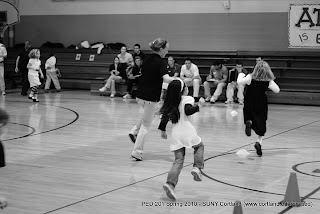
This week in lab we did a dinosaur theme. My group was the first group to go this week and it was rough! The kids were just so wired and energetic that it made are group look like we couldn't control them. All the kids wanted to do was play basketball and run around and play with their friends. I did learn that since we were the first group going we should have just played a quick game that would get them tired out so that they would then listen and want to play our games. After attempting to play our games and the other group played their games the kids just wanted to play basketball. I tried to have the kids i worked with show me their dribble and shot, just to try and have them work on skills instead of just messing around with their friends. The kids loved the song that the last group did and i think it was a great finish to a rough start.

